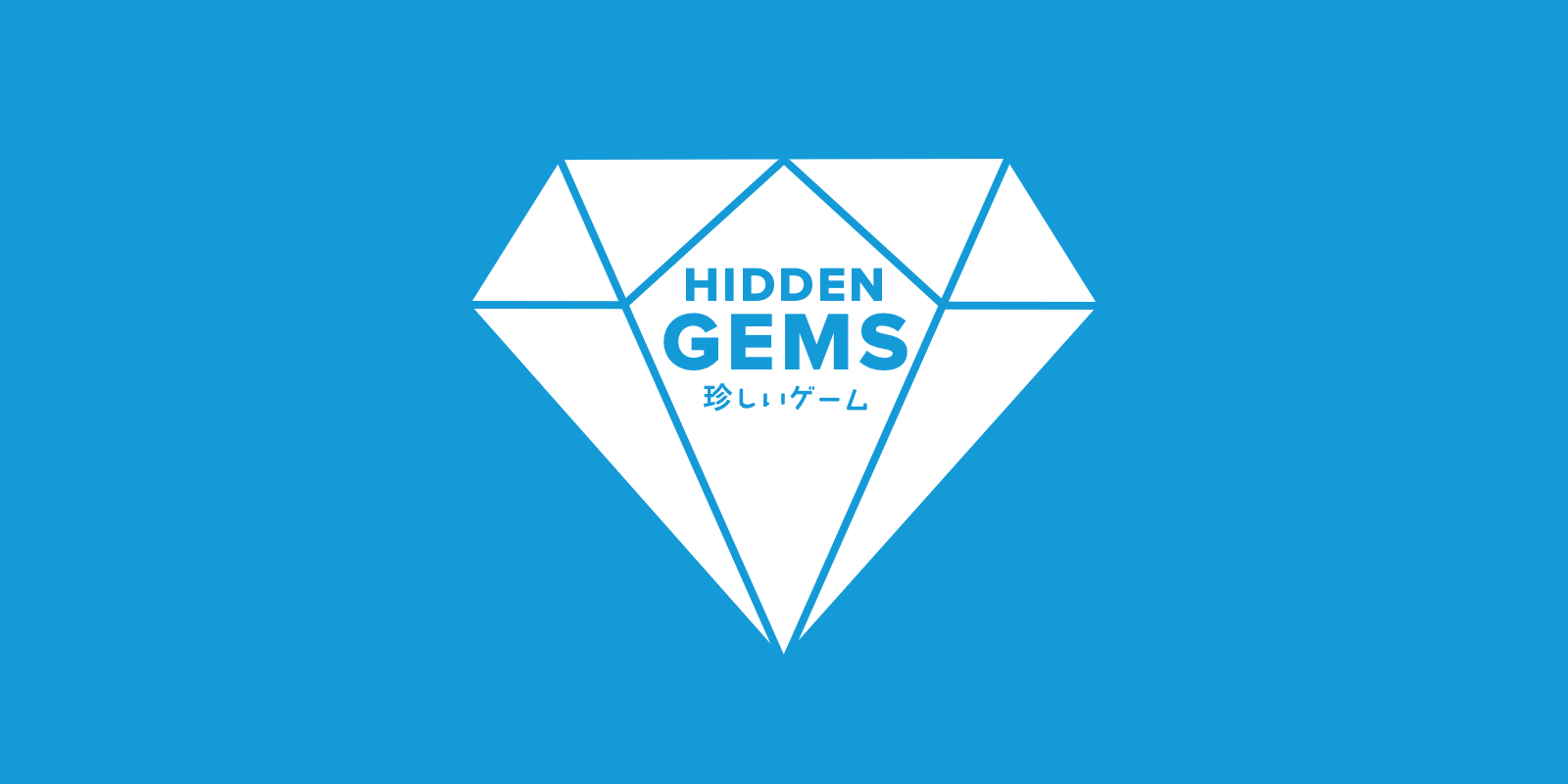Hidden Gems of Game Design Volume 17
Unearthing gems with Rusty Lake, Henry Hatsworth in The Puzzling Adventure, and Power Rangers: Dino Thunder

There are plenty of amazing games that go unnoticed and are not played widely, for one reason or another. Maybe it's a diamond in the rough, or the marketing wasn't there, or it could be a game ahead of its time. For this monthly series, I've asked my fellow writers on SUPERJUMP to pick a game they think is deserving of a chance in the spotlight. Let us know your favorite hidden gems in the comments.
Josh Bycer
Rusty Lake Series (2015-Now)

What happens when you combine point-and-click adventure games with Twin Peaks? You get the Rusty Lake series. Developed by the studio of the same name, Rusty Lake is a now-longstanding anthology of challenging and weird puzzle games. The franchise originally started on Flash, but when Flash was removed, they have since ported the series and released all their later games on Steam.
Our story is about the mysterious Rusty Lake hotel which sits in the middle of a lake. The place draws strange characters that have an impact on time and space, and somehow both a detective and a family seem to be tied to these odd events. Each game follows a similar format, organized into chapters that sometimes take place in the same area, while at other times they may be in a different environment. The puzzles for each chapter are self-contained, but items you collect in a previous chapter may be used again in a different way later on.
The puzzle logic does go all over the place. Some are built on themes or logic challenges we’ve seen before; some follow with “stranger logic.” In terms of difficulty, it can be on the harder side in spots. Part of the challenge of the game is that within each chapter, characters or the environment may change based on where the player is at in terms of completing it. It can be very easy to miss someone moving to a new position, a new item showing up, etc., which then ends up being the key to the next puzzle. Password-based puzzles pop up often and due to the basic aesthetic of the series, sometimes it can be hard to make out what something is or what the clue is trying to denote.

As a special twist to the series beyond the overarching plot that ties it all together, many of their games will feature alternate puzzles and challenges that can lead to different endings, while giving attentive players an additional reward for exploring everything. The developers are also willing to get experimental with their games. One entry is a co-op game framed with two players being in the same place at different time periods and having to pass clues and solve puzzles between them. In Cube Escape: Paradox, the game comes with a live-action movie that takes place within the setting of the game, which also provides hints and secrets to the game itself.
Currently, Rusty Lake has 9 games available on Steam, with one a collection of their original Flash series Cube Escape. If you enjoy point-and-click adventure games that are a bit on the strange side, then this entire collection is for you.
Elliot Townend
Henry Hatsworth in The Puzzling Adventure (2009)

Henry Hatsworth in the Puzzling Adventure is a criminally overlooked platform puzzle game for the Nintendo DS. The game follows the titular character’s adventure to assemble all the pieces of the Gentleman’s Suit with which the wearer can control the puzzle dimension and claim the treasure within.
The game’s plot serves as dressing for the real meat of the experience, that being its two intertwined gameplay styles. On the top screen, players take control of the spiffing British gentleman Henry Hatsworth, running through 2D side-scrolling levels defeating baddies and collecting treasure along the way. The bottom screen, however, represents the Puzzle Dimension and features a block-sliding match-3 game that constantly progresses upwards. These two gameplay elements can be switched between at will and directly affect one another, creating a unique and fun gameplay loop.
Enemies defeated and power-ups collected on the top screen fall to the grid of the Puzzle Dimension on the bottom screen, where they must be matched with same-coloured blocks to be defeated or collected respectively. Any enemies that make it to the top of the bottom screen will come back to haunt Henry, attacking him again in a new form. Clearing blocks in the Puzzle Dimension also serves to charge Henry’s power meter, which can restore his youth through the power of the Golden Hat, and unleash the power of Tea-Time, in which he briefly enters a mech to destroy his enemies. Matching blocks in the Puzzle Dimension can also open doors on the top screen, or even power up shots from Henry’s blunderbuss. It all comes together as two distinct gameplay loops that are each made more interesting by how they interact.

Alongside its great core gameplay concept, the game boasts good comedic writing and a surprisingly memorable soundtrack. Boss battles are fun, featuring attacks that not only threaten Henry but also hinder the player’s ability to manage the threat of the Puzzle Dimension. The game feels consistently fresh through the constant gameplay switching, enemy variety, and the various options the player has to overcome adversity. True to its title as an adventure, the game encourages exploration, featuring a variety of secret levels and hidden treasures with which the player can purchase upgrades.
Henry Hatsworth in the Puzzling Adventure is a fun and engaging game that offers players something different. To this day it remains a unique experience with a lot of charm and personality that is definitely worth a play if you get the chance.
Antony Terence
Power Rangers: Dino Thunder (2004)

As a franchise that has captivated kids across decades, Power Rangers has incredible cross-generational appeal. Its themed films and series have been enjoyed all over the world thanks to excellent localization (shout-out to the Tamil dub that I grew up with). Teens in superhero outfits, mech assaults, and boss fights with exaggerated explosions; Power Rangers had them all.
Its success allowed the franchise to diversify via merchandise, trading cards, and video games. Power Rangers: Dino Thunder from THQ was one such effort. The Game Boy Advance version was among the first games I played on the handheld so my experience was far more favorable than most critics. As a side-scroller with basic combat, some puzzles, and the occasional mech Zord fight, it had enough variety for a game aimed at kids.
Each of the three Rangers had unique move sets and could summon their Zord mechs into the side-scroller levels to clear enemies on-screen. The Blue Tricera Ranger was my favorite from the show and his Tricera Shield attacks translated well into this adaptation. Missions started off with a briefing and a Ranger dropping in with tasks like beating several enemies or freeing humans. This was mixed up with the occasional puzzle that the Black Branchio Ranger was responsible for.
These puzzles would then free up more unique Zords to be used in the large-scale mech Zord fights. Assigning Zords to your mech’s arms for unique attacks and facing another massive mech remains a core memory unblemished by time. While the mech combos were fairly limited, watching a hulking robot beat another machine to scrap metal never lost its luster.
The visuals and audio were faithful reproductions of their source material, complete with detailed pixel art and smooth animations. Unfortunately, combat and traversal got repetitive after a while. The first boss fight felt neat initially but he kept showing up throughout the game. The White Drago Ranger and Mesagog boss fights were better though, with more thought put into them. As for reaching the ending as a kid, it took longer than expected since the stages lacked progress markers. Despite that, two-hour YouTube playthroughs of the game made me rethink my younger self’s gaming aptitude.
Game Informer bashed the game, stating “You owe the fruit of your loins something better.” But as a child, I found a lot of charm buried beneath its repetitive gameplay and basic combat. The puzzles were interesting, despite largely being “rearrange the maze” sequences, and the Zord battles they led to are among the better experiences I’ve had on the Game Boy Advance. It’s worth a look for fans of the franchise, particularly those who grew up with its iconic theme songs and battle sequences.


